
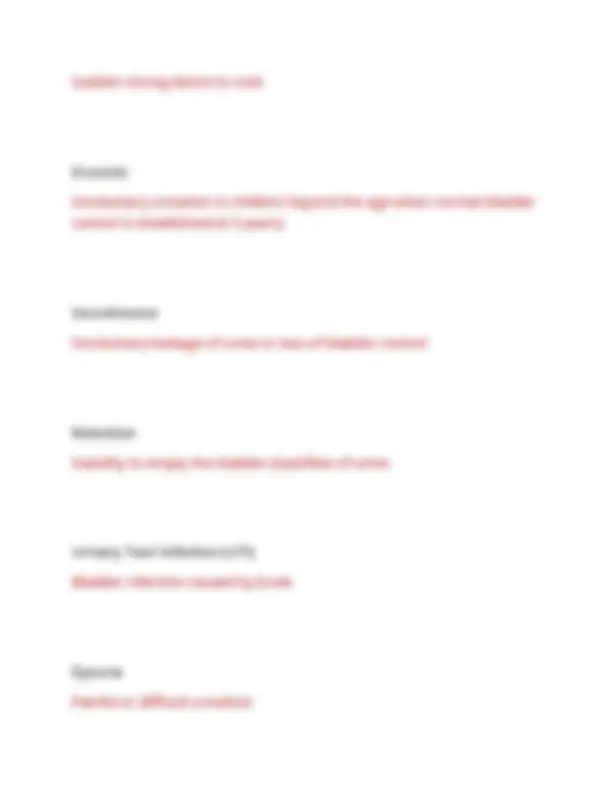
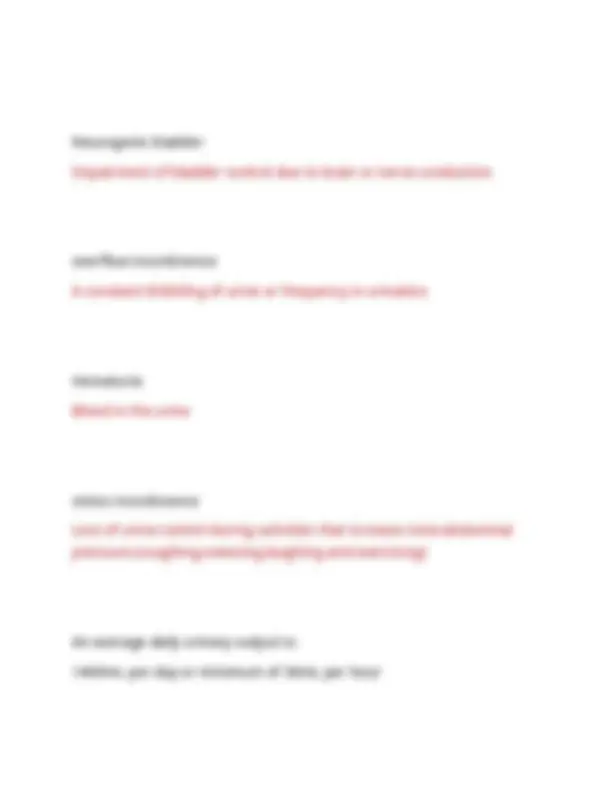
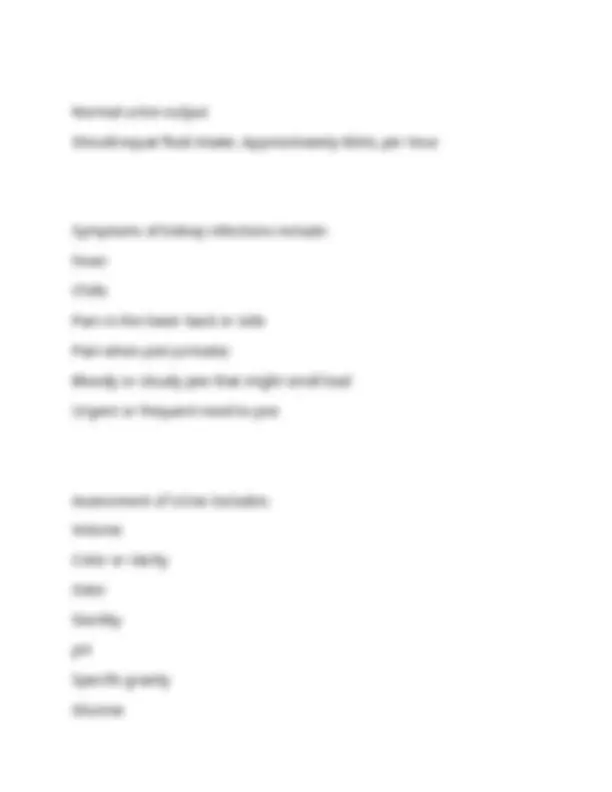
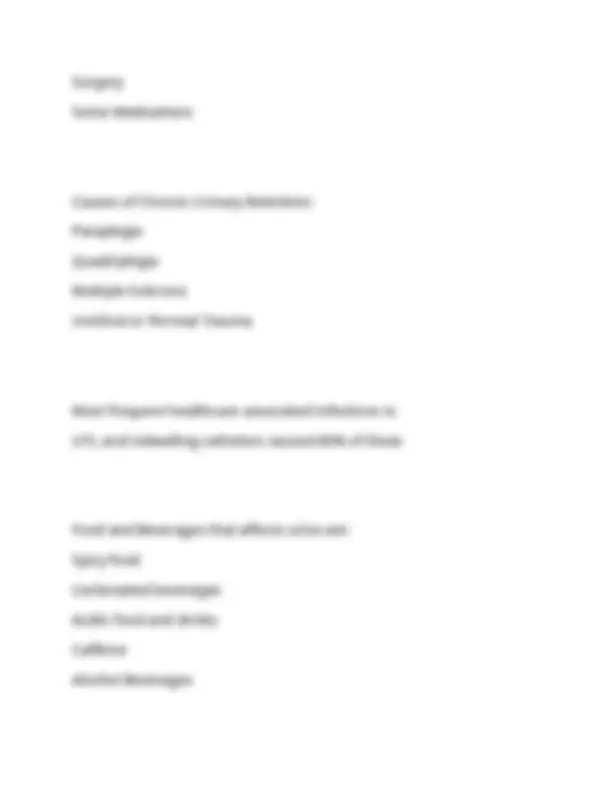

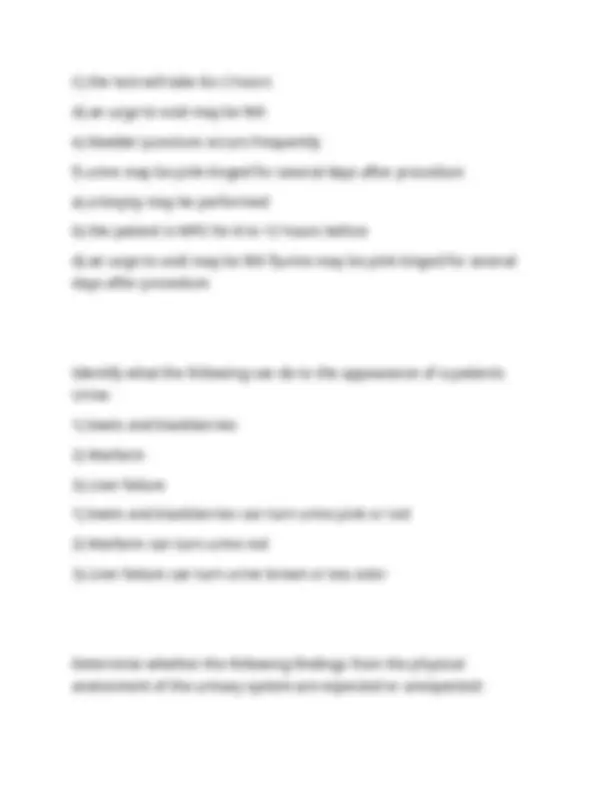
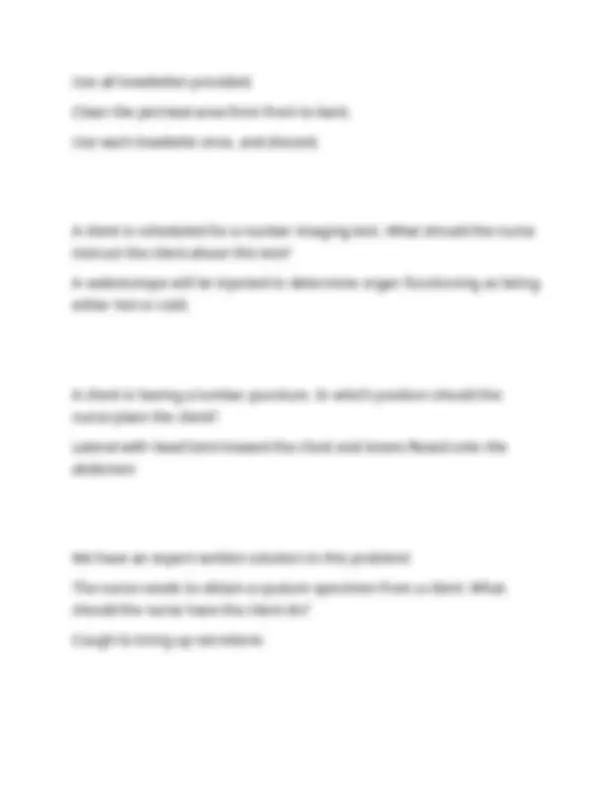

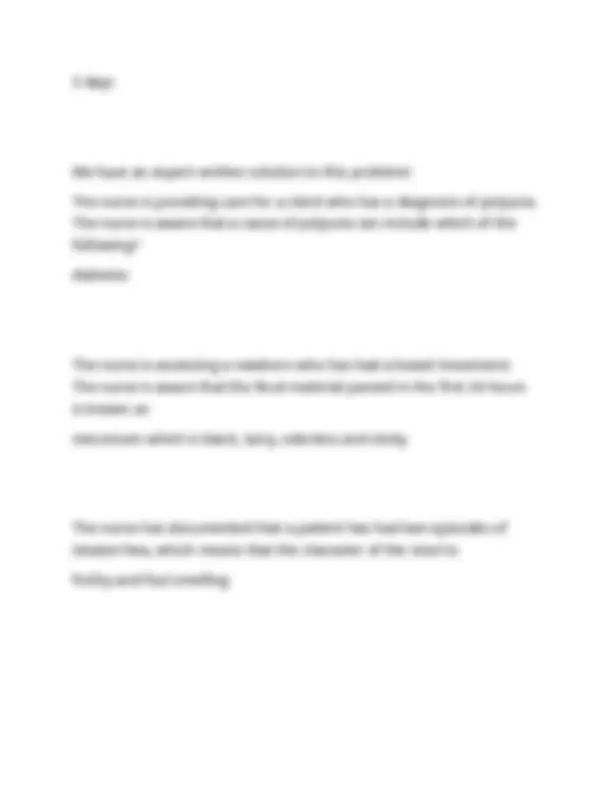
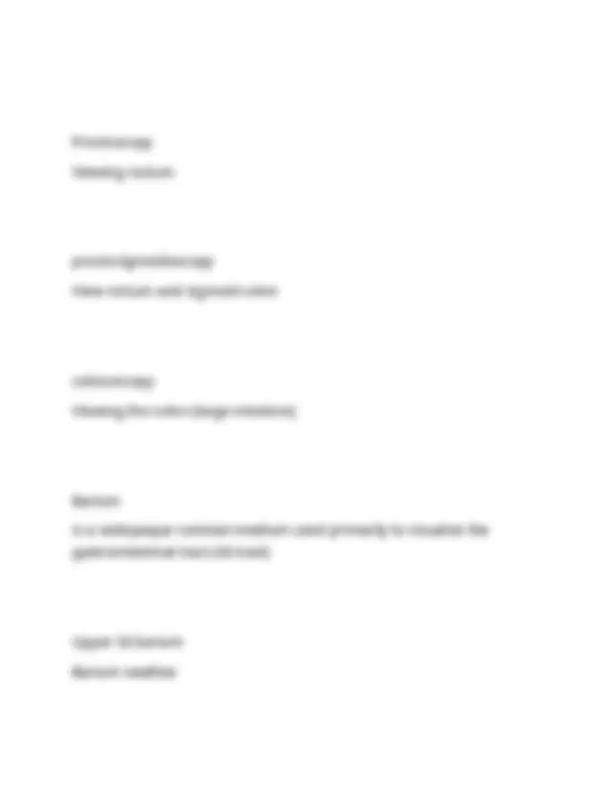
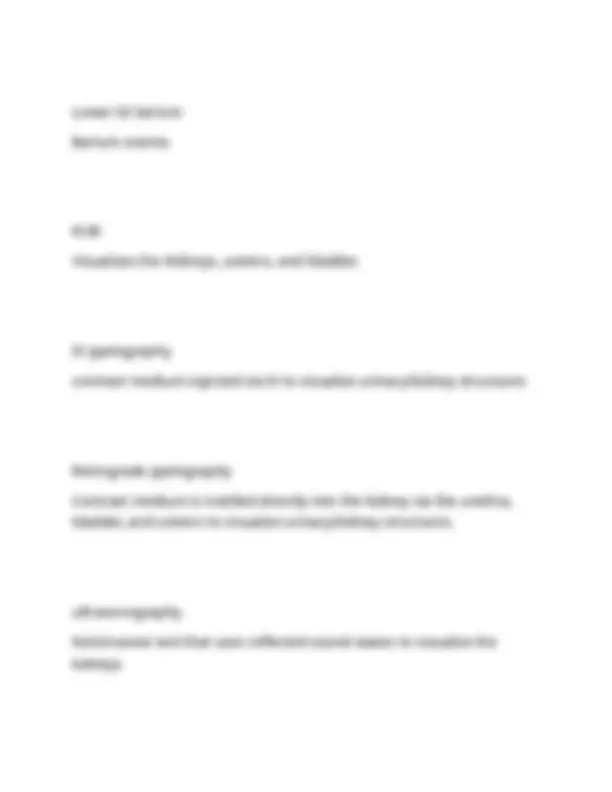
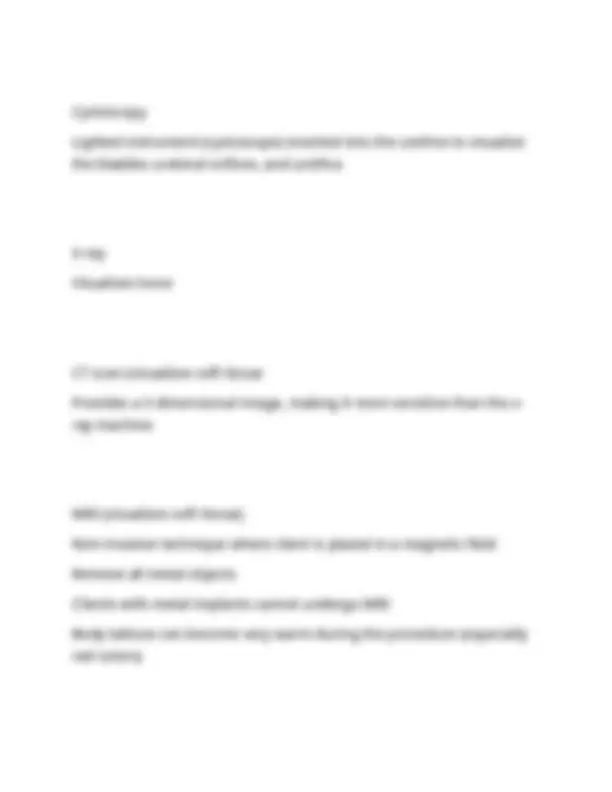
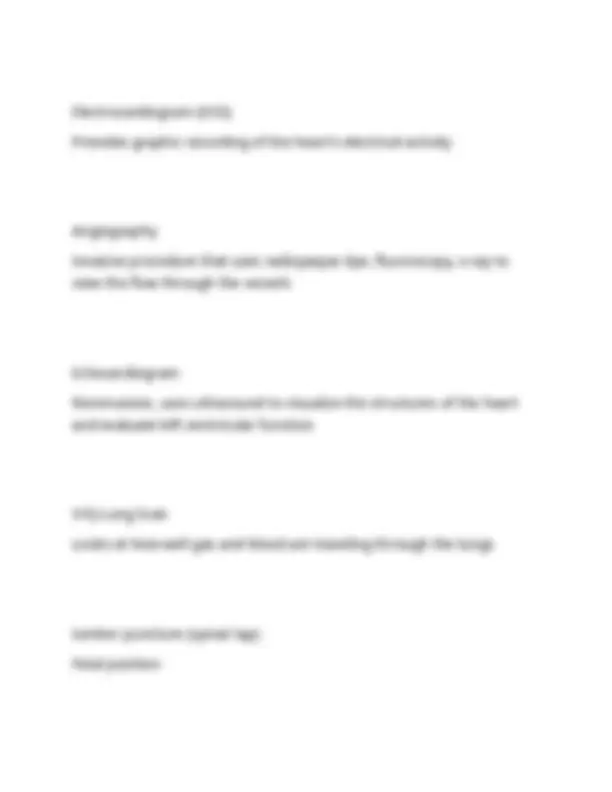
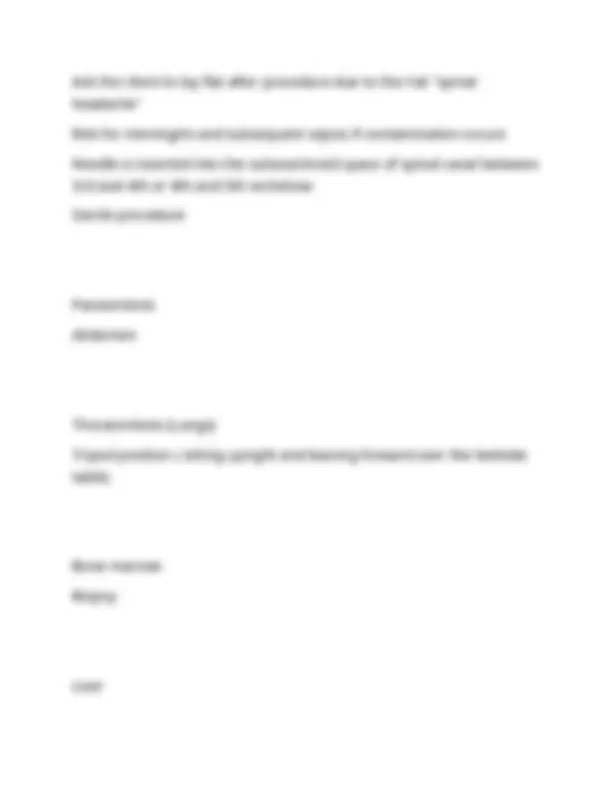
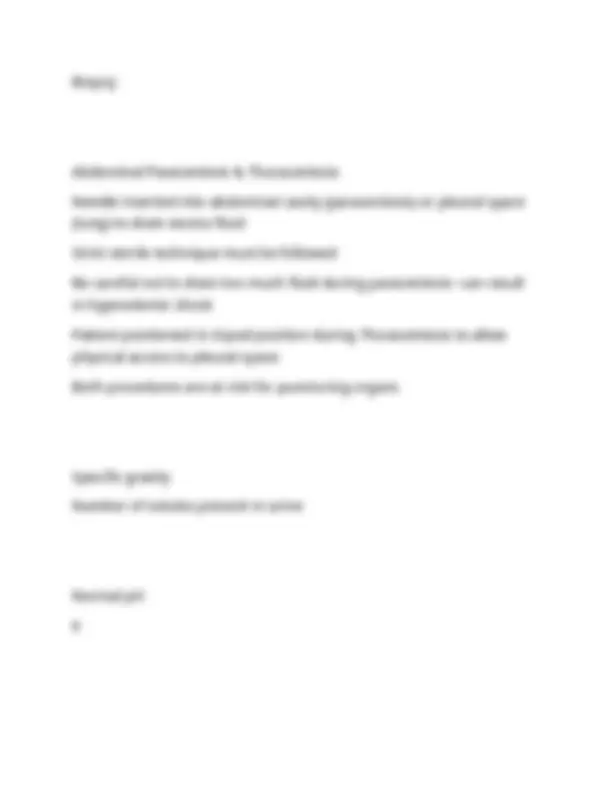
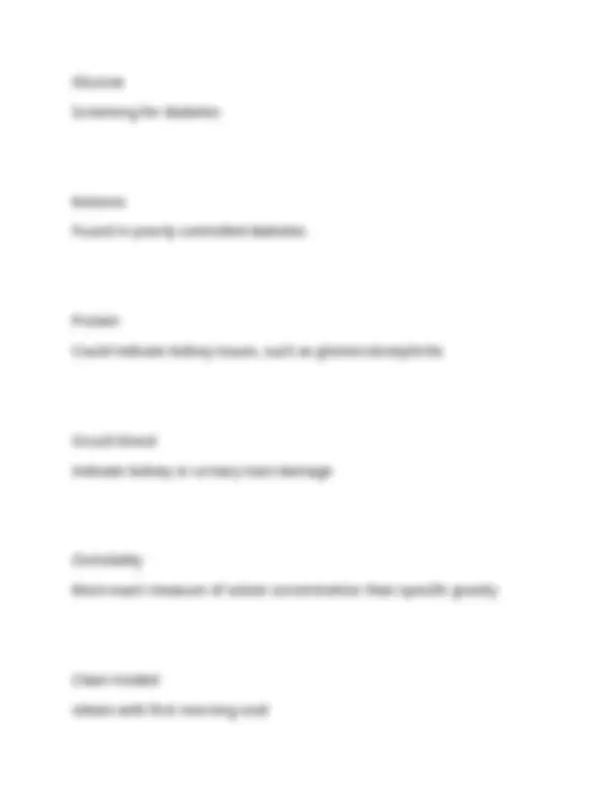
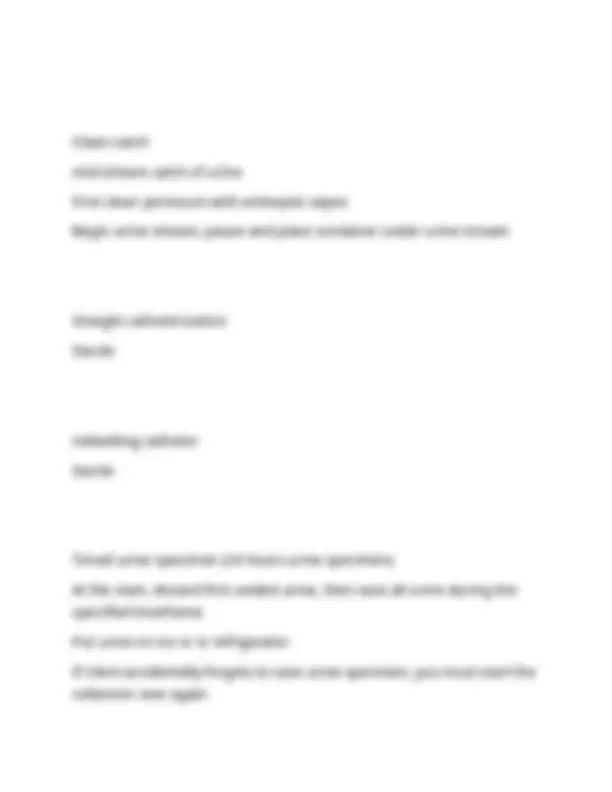
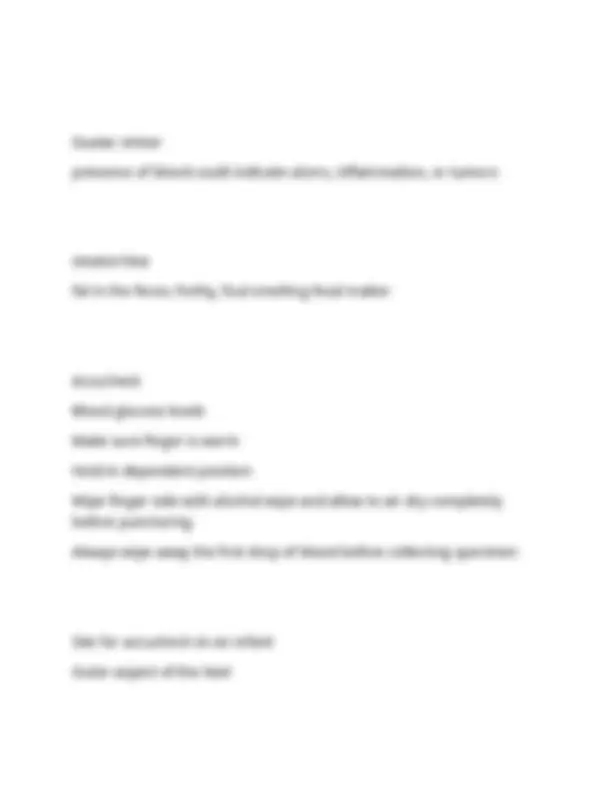
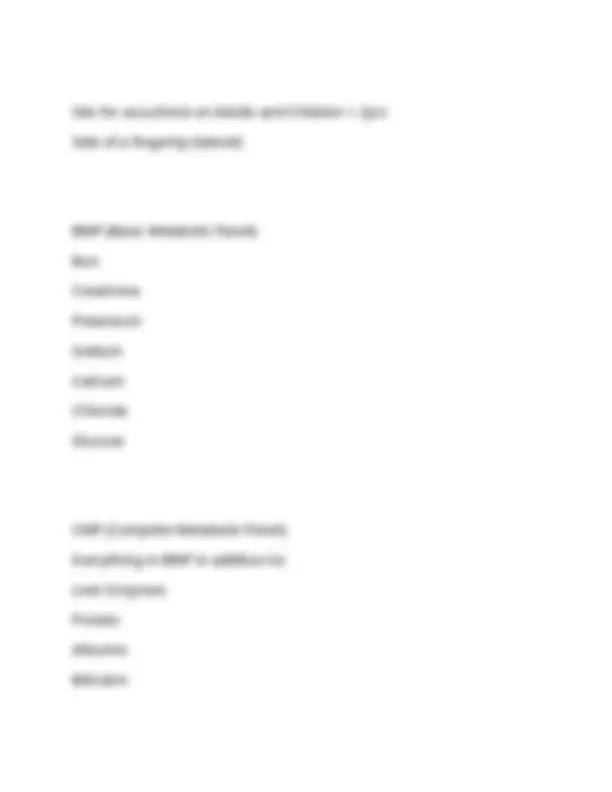
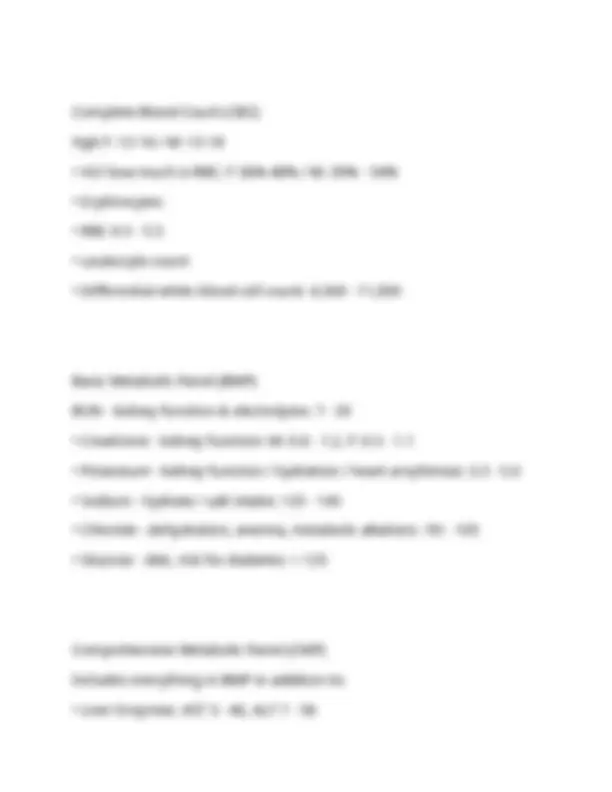
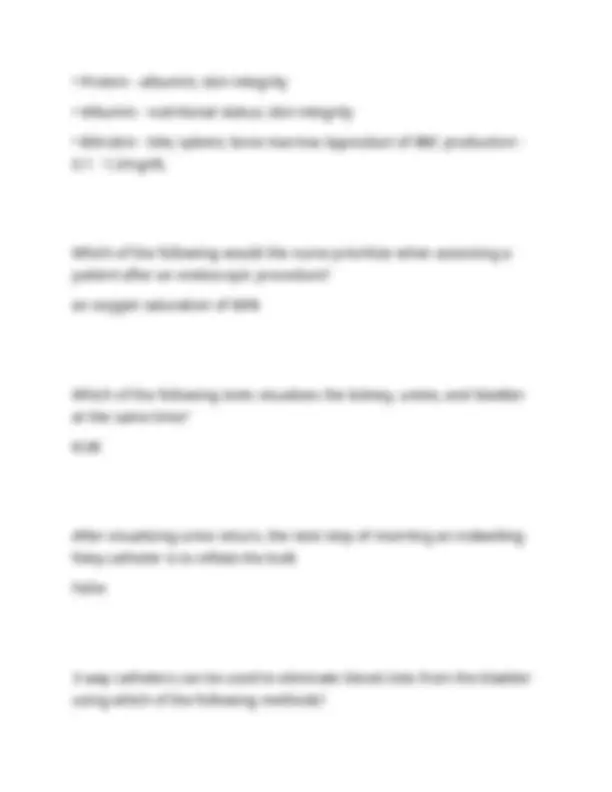
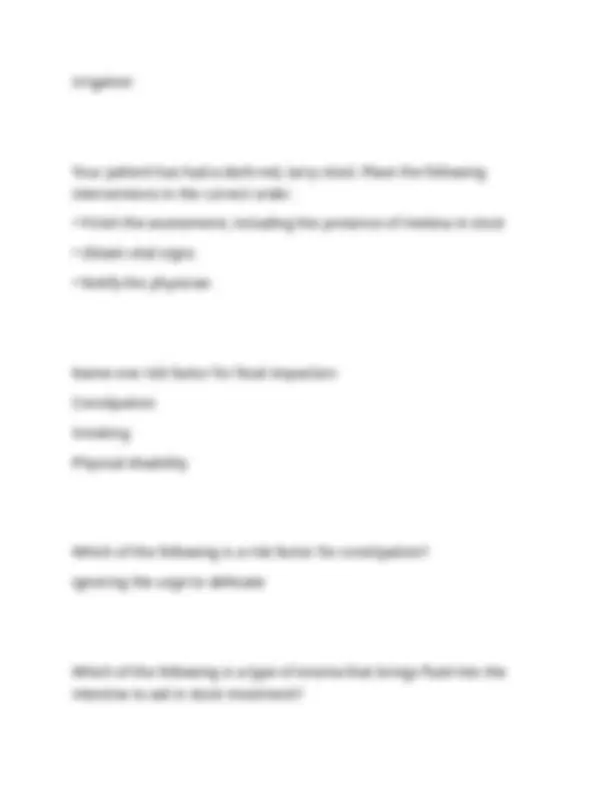
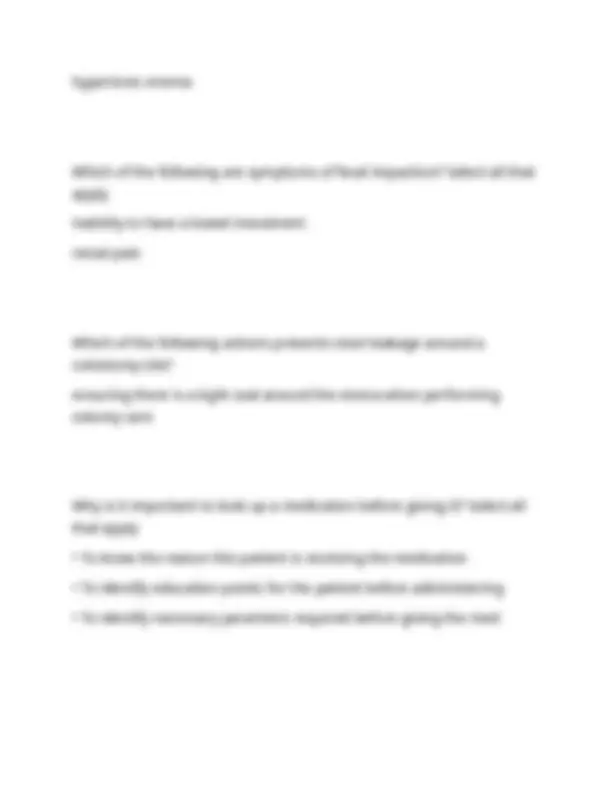
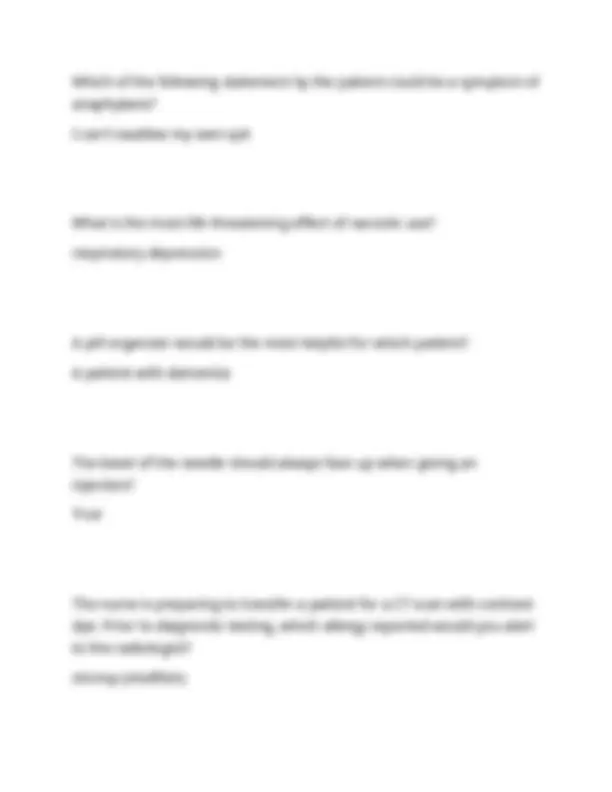
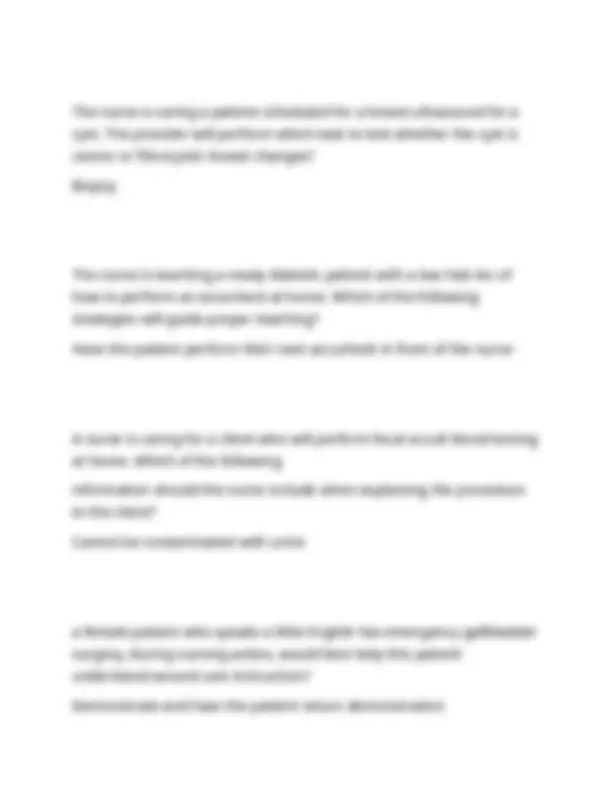
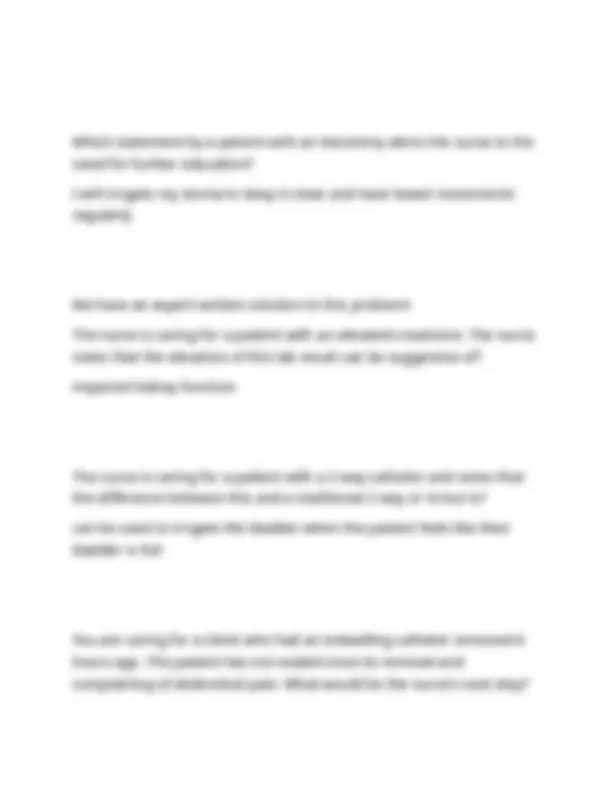
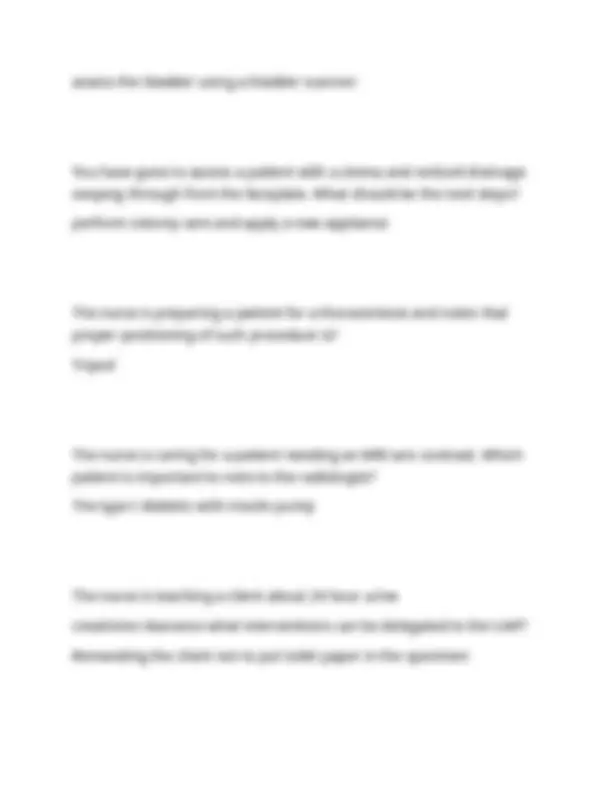
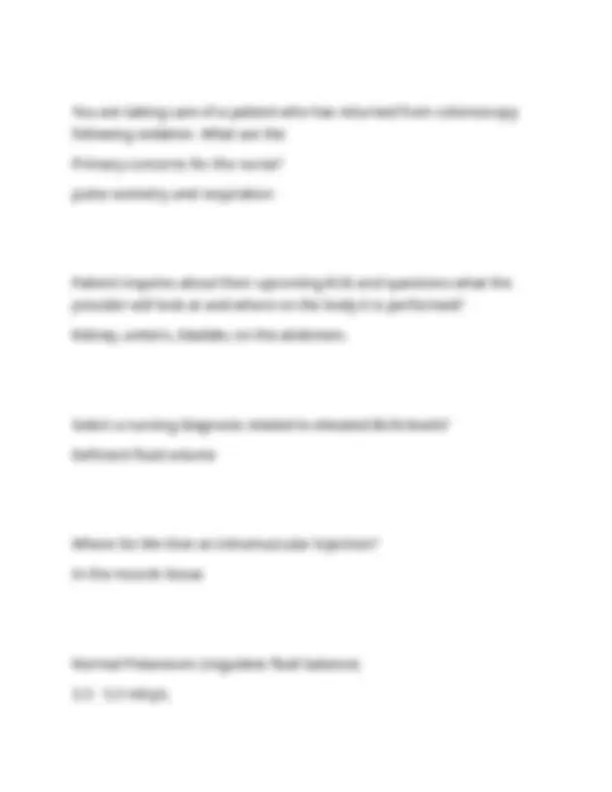
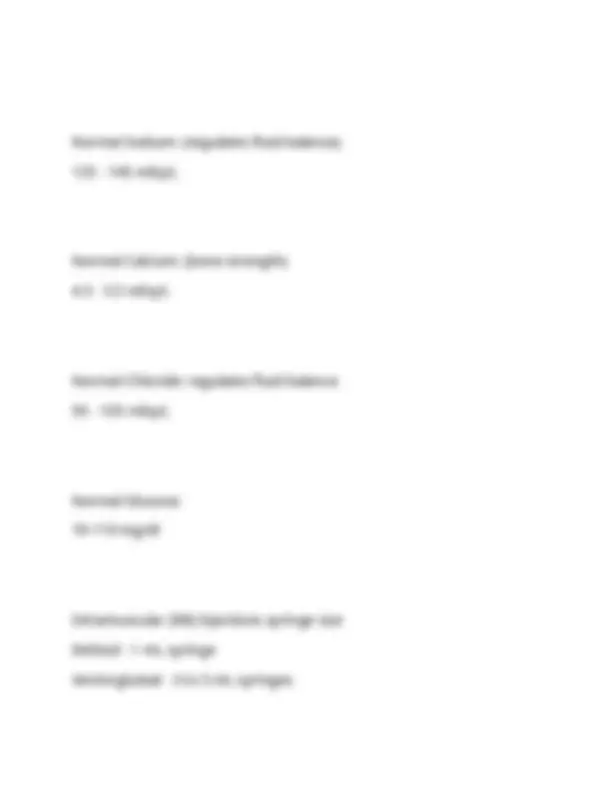
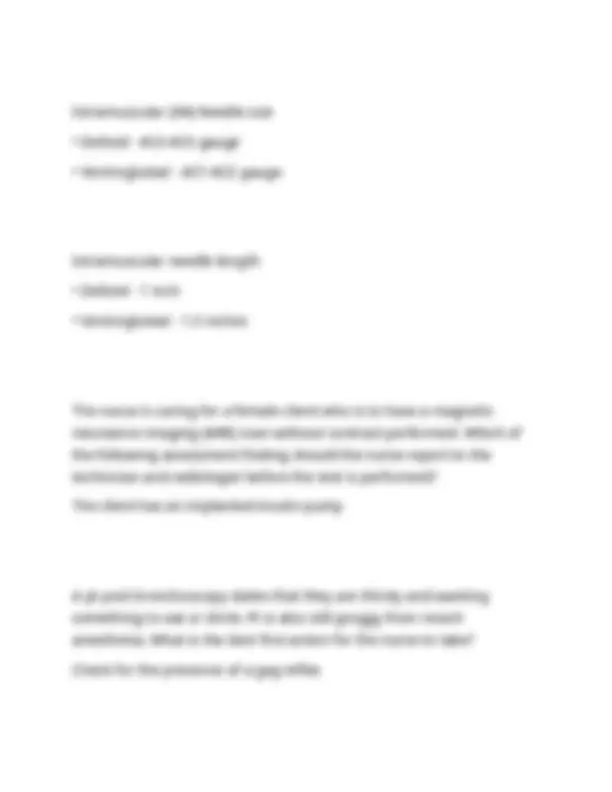
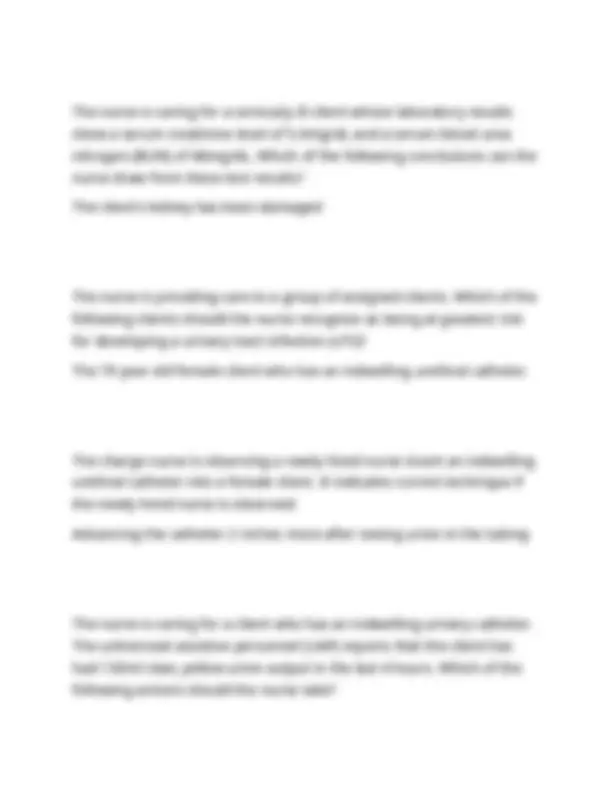
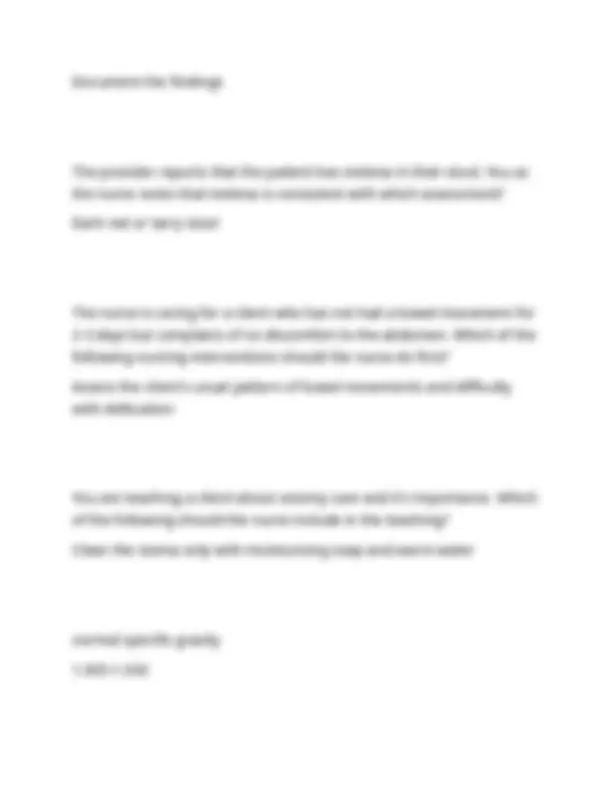
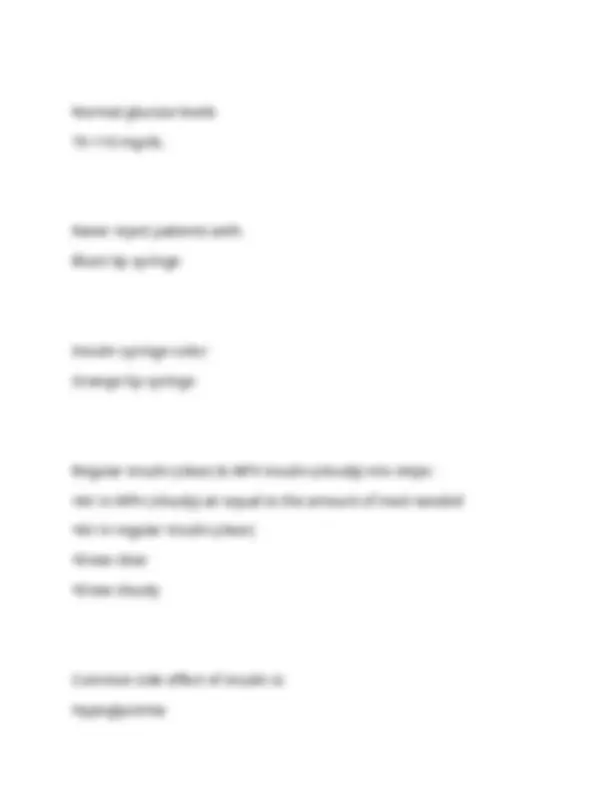
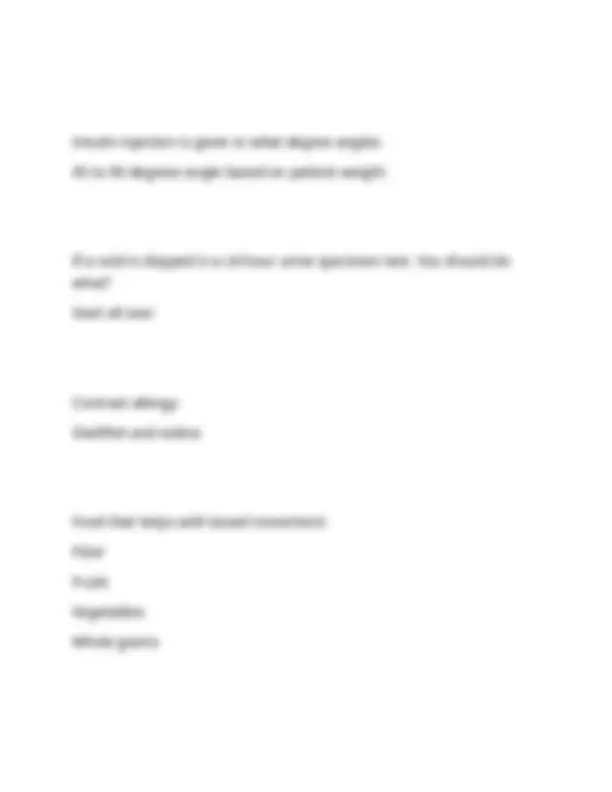
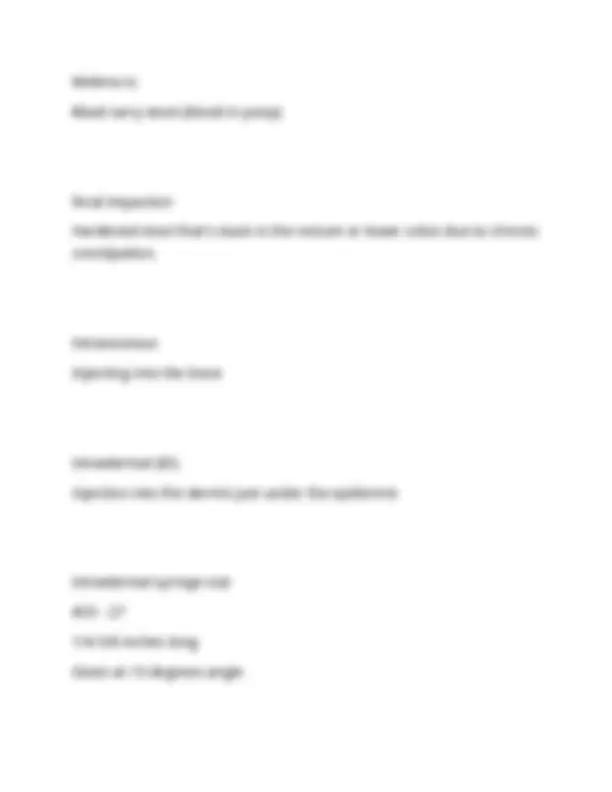
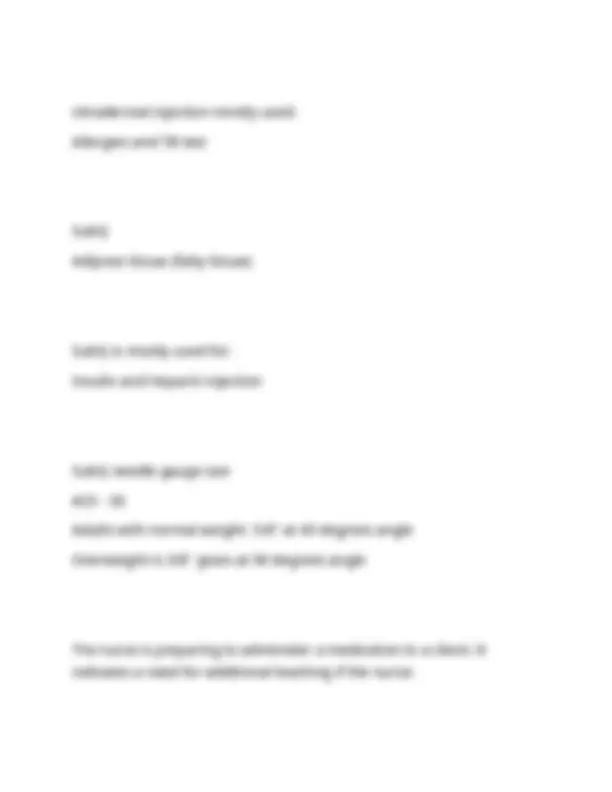
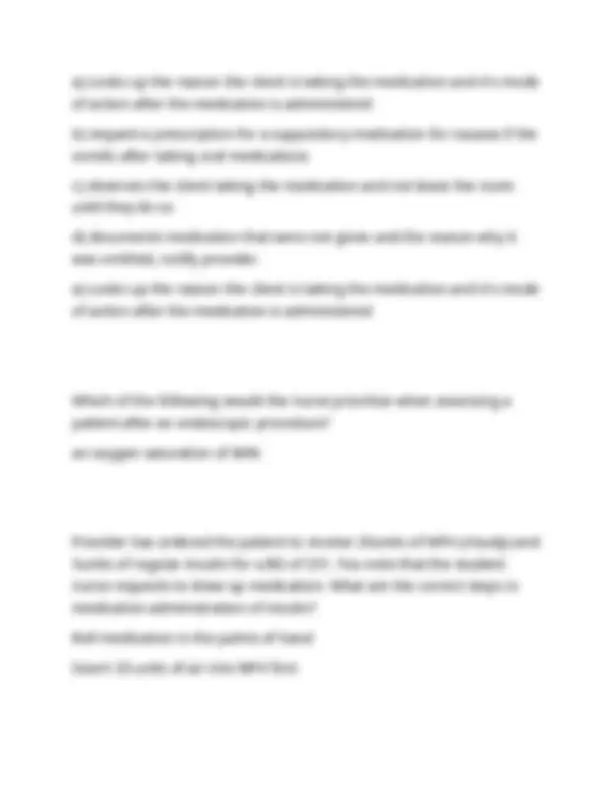
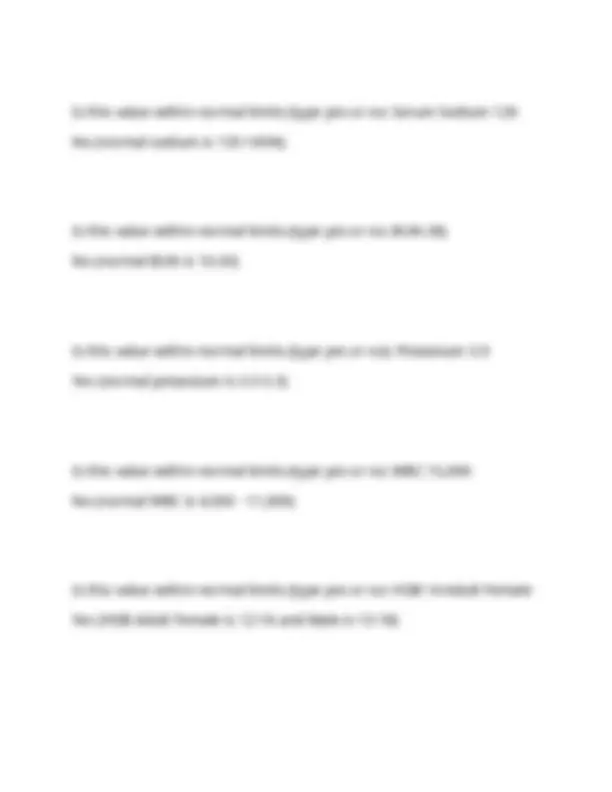
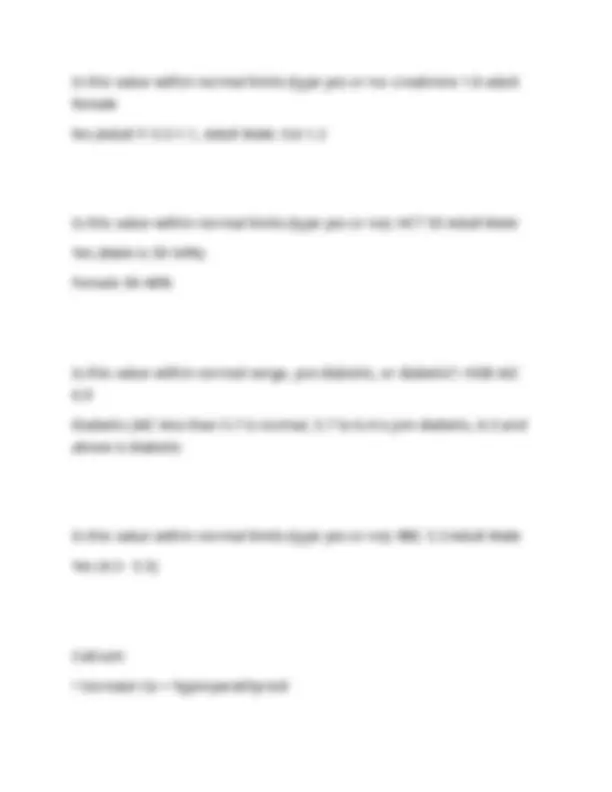
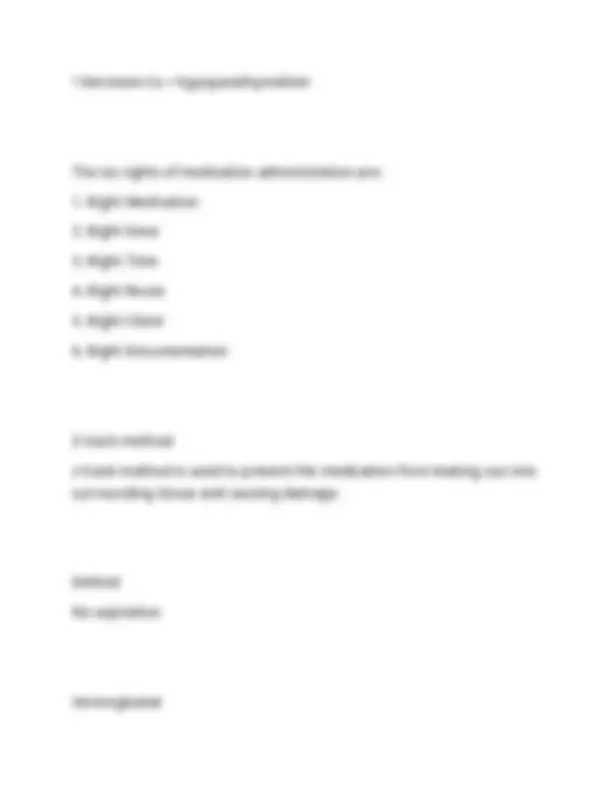
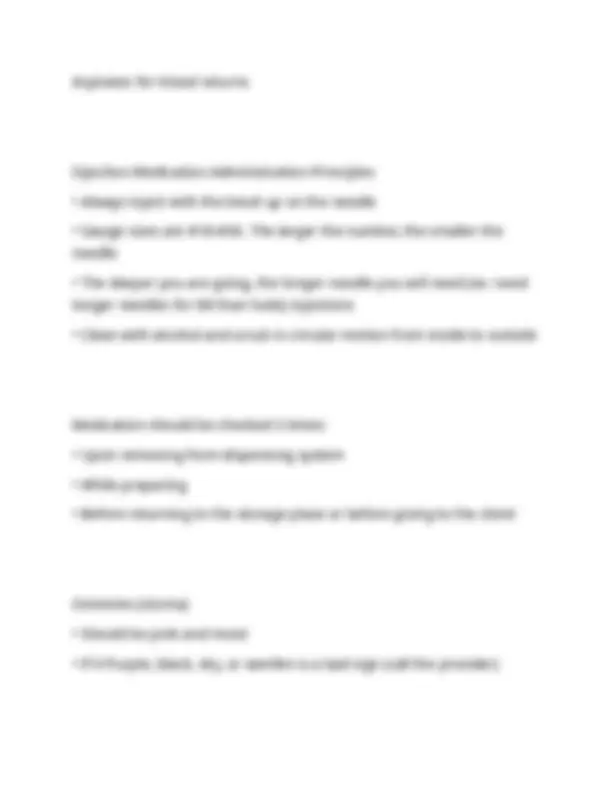
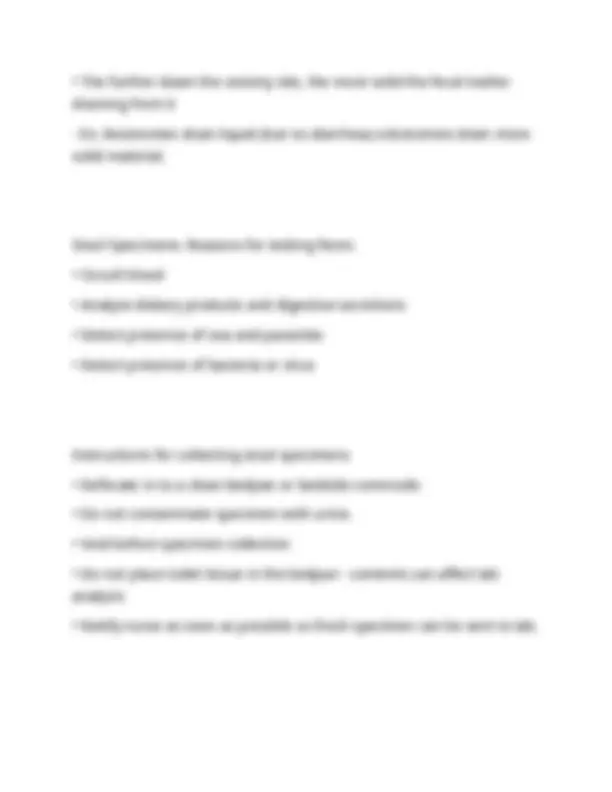
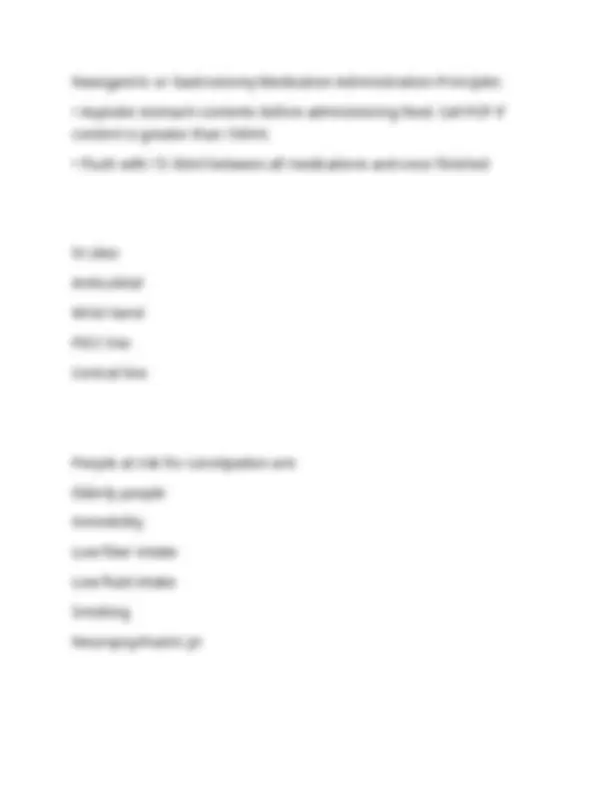


Study with the several resources on Docsity

Earn points by helping other students or get them with a premium plan


Prepare for your exams
Study with the several resources on Docsity

Earn points to download
Earn points by helping other students or get them with a premium plan
Community
Ask the community for help and clear up your study doubts
Discover the best universities in your country according to Docsity users
Free resources
Download our free guides on studying techniques, anxiety management strategies, and thesis advice from Docsity tutors
NSG 3100 EXAM 3 WITH CORRECT AS 2025. NURSING FUNDAMENTAL CONCEPTS AND SKILLS
Typology: Exams
1 / 51

This page cannot be seen from the preview
Don't miss anything!












































Factors influencing urinary Elimination Developmental Factors Psychosocial Factors Fluid and Food Intake Medications Muscle Tone Pathologic Conditions Surgical Procedures Developmental Factors Are; Infants Preschooler (5-6 years) School-age Children Older Adults
Polyuria Excessive fluid volume of 2500mL or more per day Oliguria Output of 100mL to 500mL per day, and can cause kidney failure. Anuria Output of 50mL to 100mL in 24 hours (per day) Frequency Voiding frequently throughout the day (4-6 times per day) Nocturia Excessive urination at night Urgency
Neurogenic bladder Impairment of bladder control due to brain or nerve conduction overflow incontinence A constant dribbling of urine or frequency in urination Hematuria Blood in the urine stress incontinence Loss of urine control during activities that increase intra-abdominal pressure (coughing,sneezing,laughing and exercising) An average daily urinary output is: 1400mL per day or minimum of 30mL per hour
Normal urine output Should equal fluid intake. Approximately 60mL per hour Symptoms of kidney infections include: Fever Chills Pain in the lower back or side Pain when pee (urinate) Bloody or cloudy pee that might smell bad Urgent or frequent need to pee Assessment of Urine Includes: Volume Color or clarity Odor Sterility pH Specific gravity Glucose
The nurse will inspect and palpate the suprapubic area and use a bladder scanner if available What can be indicated for a patient with anuria or oliguria? Dialysis What is the difference between hemodialysis and peritoneal dialysis? Hemodialysis takes the patient blood and has it flow through filters of a machine and ultra-filtrate Peritoneal dialysis uses the abdominal cavity in the membrane for exchange of fluid and molecules What is the goal of dialysis? To remove toxins, maintains fluids, electrolytes, and acid-base balance. Causes of Urinary Retention Prostatic Hypertrophy
Surgery Some Medications Causes of Chronic Urinary Retention: Paraplegia Quadriplegia Multiple Sclerosis Urethral or Perneal Trauma Most frequent healthcare associated infections is: UTI, and indwelling catheters caused 80% of these Food and Beverages that affects urine are: Spicy food Carbonated beverages Acidic food and drinks Caffeine Alcohol Beverages
C) the test will take Ito 2 hours d) an urge to void may be felt e) bladder puncture occurs frequently f) urine may be pink-tinged for several days after procedure a) a biopsy may be performed b) the patient is NPO for 8 to 12 hours before d) an urge to void may be felt f)urine may be pink-tinged for several days after procedure Identify what the following can do to the appearance of a patients Urine:
Use all towelettes provided. Clean the perineal area from front to back. Use each towelette once, and discard. A client is scheduled for a nuclear imaging test. What should the nurse instruct the client about this test? A radioisotope will be injected to determine organ functioning as being either hot or cold. A client is having a lumbar puncture. In which position should the nurse place the client? Lateral with head bent toward the chest and knees flexed onto the abdomen We have an expert-written solution to this problem! The nurse needs to obtain a sputum specimen from a client. What should the nurse have the client do? Cough to bring up secretions
A nurse is providing patient teaching to a client who has been diagnosed with urinary incontinence. The nurse would be appropriate to educate the client to perform exercises to strengthen the muscles and sphincters which control urine flow. The name of the these exercises is Kegel The nurse is providing instructions to a client at home via telehealth regarding collecting a clean catch urine sample. Which of the following is appropriate client teaching? Collect the first voided specimen in the am. An older adult resident in a long-term care facility has experienced constant diarrhea for 3 days and is now exhibiting signs and symptoms of dehydration. The nurse initiates an intervention to offer small amounts of Gatorade frequently: Gatorade A nurse is monitoring bowel elimination of a patient who has a history of constipation. The nurse implements measures to assist with bowel elimination if the patient has not had a bowel movement within how many days?
There is an order to administer a cleansing enema to an adult patient before bowel surgery. The nurse will fill the enema bag with how many milliliters of fluid for this procedure? 500 to 1000mL The nurse points out that age-related changes in the intestinal tract are relatively insignificant. The changes include: atrophy of the villi in the small intestine decreased absorption of fats and vitamin B creation of excessive flatus The nurse is performing an assessment of the abdomen. When auscultating bowel sounds the nurse is aware they are hearing: peristalsis The nurse is caring for a client who has urinary urgency. The nurse is aware that a common cause of urgency can include: urinary tract infection
A client with ulcerative colitis had a new colostomy created 2 days earlier and is beginning to pass malodorous flatus from the stoma. What is the correct interpretation by the nurse? This is a normal, and expected finding A primary health care has ordered digital removal of stool for a constipated client. How would the nurse position the client for this procedure? Left lateral side lying position The nurse is inserting an indwelling urinary catheter in a male client. As she begins to inflate the bulb, the patient complains of severe pain. Which action should the nurse take next? Stop inflating the ballon, allow saline solution to drain in syringe, and advance the catheter farther. Anoscopy Visualizing the anus
Lower GI barium Barium enema KUB Visualizes the Kidneys, ureters, and bladder. IV pyelography contrast medium injected via IV to visualize urinary/kidney structures Retrograde pyelography Contrast medium is instilled directly into the kidney via the urethra, bladder, and ureters to visualize urinary/kidney structures. ultrasonography Noninvasive test that uses reflected sound waves to visualize the kidneys
Cystoscopy Lighted instrument (cystoscope) inserted into the urethra to visualize the bladder, ureteral orifices, and urethra X-ray Visualizes bone CT scan (visualizes soft tissue Provides a 3-dimensional image, making it more sensitive than the x- ray machine MRI (visualizes soft tissue) Non-invasive technique where client is placed in a magnetic field Remove all metal objects Clients with metal implants cannot undergo MRI Body tattoos can become very warm during the procedure (especially red colors)